Confidence, Collaboration Key For Advancing Community Pharmacy Services | PQA 2025
Michael Hegener, PharmD, BCACP, discusses how collaboration with health plans and pharmacy employers can enhance the implementation of practice redesign initiatives.
Pharmacists are stepping into a more critical role in community health care, but they need support to feel confident and prepared. Just like when pharmacists first started giving immunizations and many were nervous about the new responsibility, today's pharmacists face similar challenges in expanding their professional services.
Workforce development is key to helping pharmacists become leaders in health care delivery, according to Michael Hegener, PharmD, BCACP, associate professor of Pharmacy at the University of Cincinnati James L Winkle College of Pharmacy. By providing practical experiences, training, and opportunities to learn, pharmacists can build the skills and confidence needed to take on new responsibilities.
One major challenge is the current payment structure. Many pharmacists hesitate to offer additional services because there's no clear way to get reimbursed. Payers are reluctant to pay for services they aren't sure pharmacists can deliver effectively. This creates a cycle that prevents innovation and expanded health care access. However, Hegener said creative solutions can help break this cycle.
At the PQA 2025 Annual Meeting, held May 19 to 21 in Tampa, Florida, Drug Topics® sat down with Hegener to discuss how workforce development can best address the evolving knowledge, skills, and abilities needed in community pharmacy practice, how collaboration with health plans and pharmacy employers might enhance the implementation of practice redesign initiatives, and advice he would give to pharmacists who may want to start clinical services but are hesitant due to lack of payment.
“Collaboration is key,” Hegener said. “Right now, it seems like there's pharmacists that are able to do things, but they're hesitant because they're not getting paid … There’s also payers that would likely want to pay pharmacists to do some of these great services, but the problem is, if the pharmacists aren't doing it to show the payers they can do it, why are the payers going to pay for something they don't feel confident the pharmacist can do? It's kind of like we're both holding back a little bit, and we need to collaborate and just make it happen.”
Newsletter
Pharmacy practice is always changing. Stay ahead of the curve with the Drug Topics newsletter and get the latest drug information, industry trends, and patient care tips.






































































































































